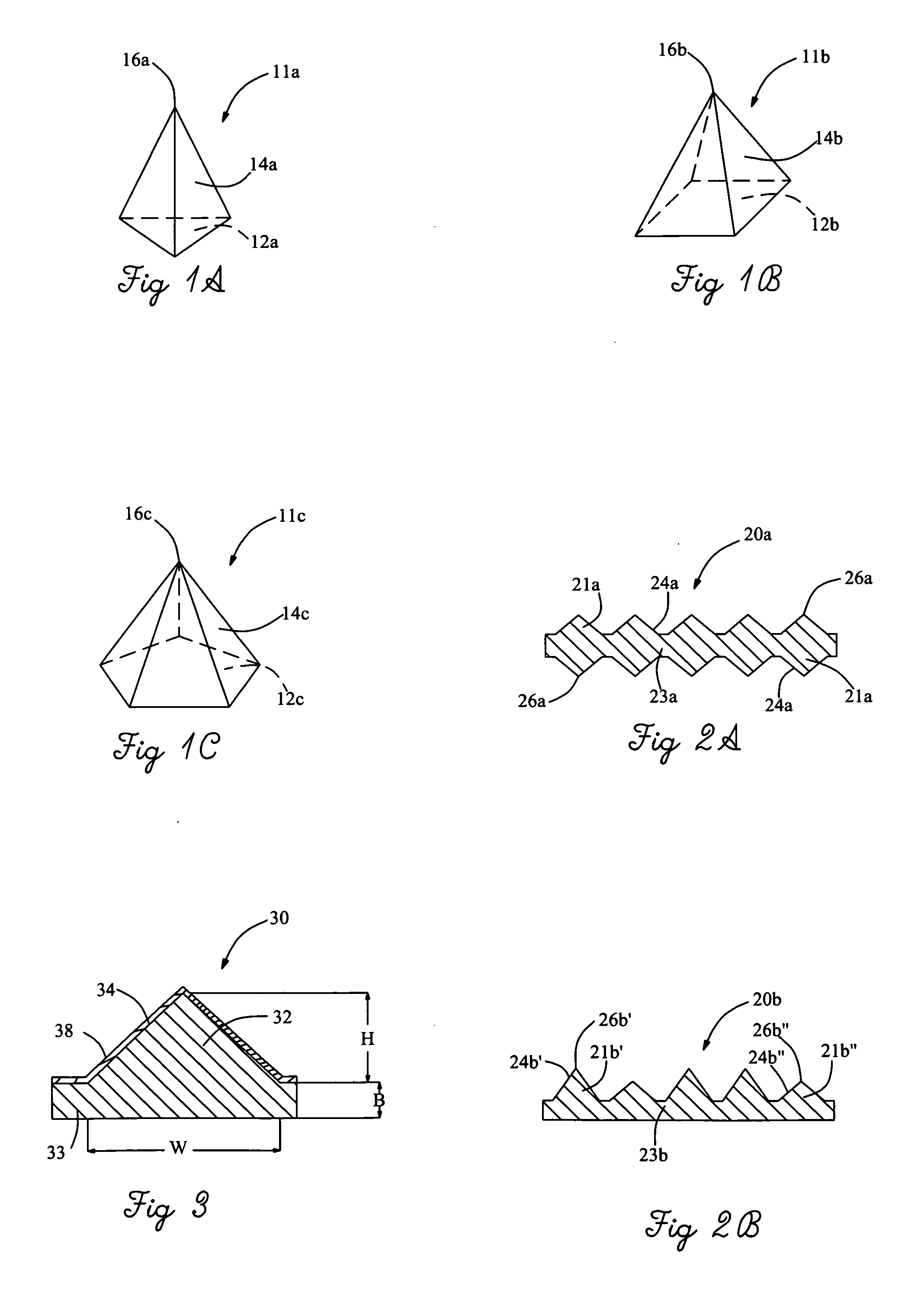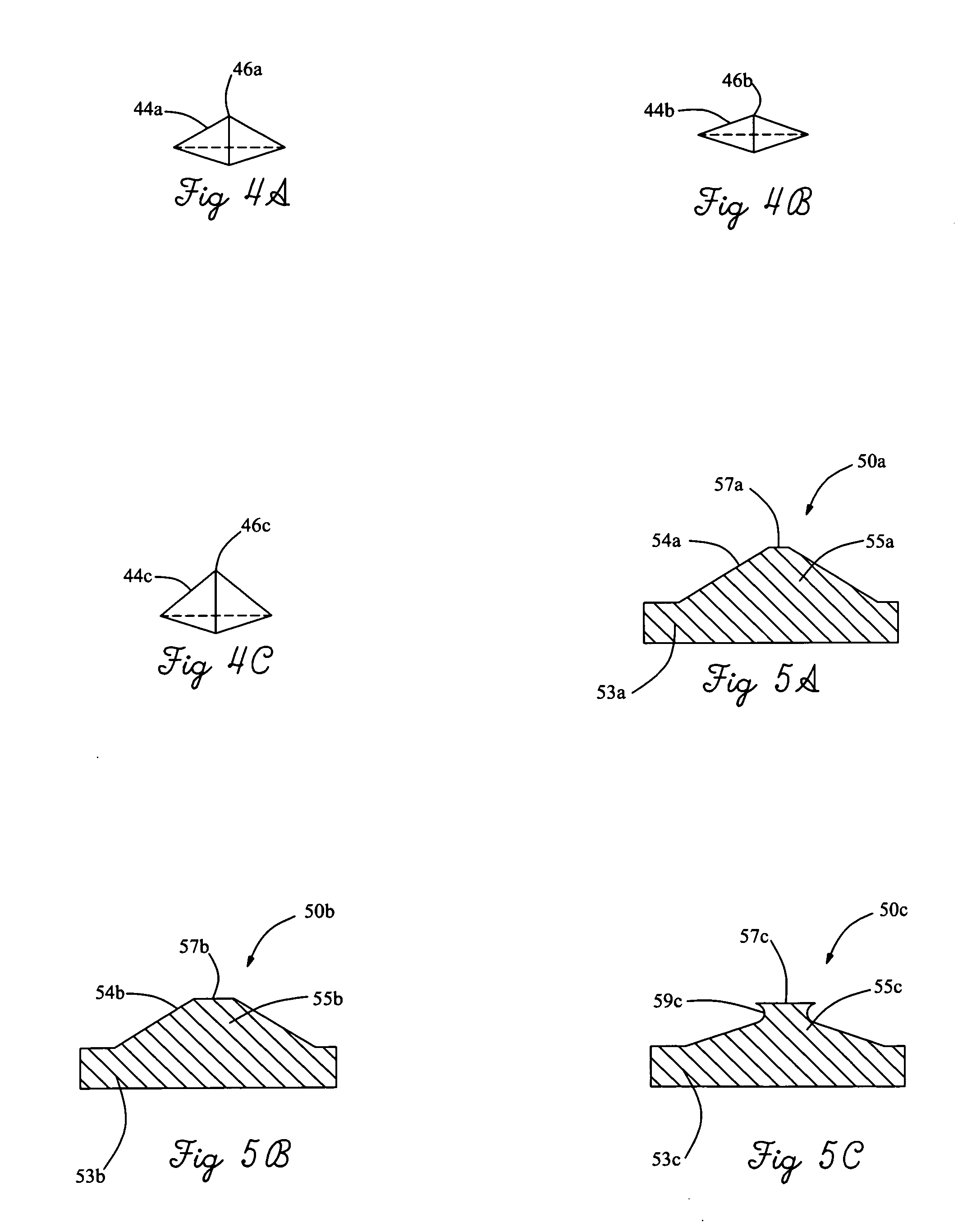Method for finishing and fitting dental restorations and an abrasive material for doing same
a dental restoration and abrasive material technology, applied in dental tools, dental surgery, manufacturing tools, etc., can solve problems such as initial irregular surfaces, and achieve the effect of rapid removal of dental restoration materials and difficult finishing and smoothing
- Summary
- Abstract
- Description
- Claims
- Application Information
AI Technical Summary
Benefits of technology
Problems solved by technology
Method used
Image
Examples
example 1
[0069]A sheet of 420 spring tempered stainless steel having a thickness of about 0.032 inch was cleaned and passivated. A photoresist solution was coated onto the passivated stainless steel and dried. A mask having pattern as shown in FIG. 9B was applied over the photoresist.
[0070]The stainless steel / photoresist / mask composite was exposed to 60 millijoules of light to effect imaging of the photoresist. The unexposed, uncrosslinked photoresist was then removed by rinsing with a developer solution. The stainless steel having the photoresist pattern thereon was re-exposed to 100 millijoules light to ensure adherence of the photo resist to the stainless steel during etching.
[0071]The stainless steel was etched to a depth of about 0.012 inch using 36 Baume ferric chloride solution at a temperature of 145° F. The resulting etched sheet was rinsed with water and the remaining photoresist was removed using an aqueous potassium hydroxide stripping solution.
[0072]The etched stainless steel wa...
example 2
[0075]A sheet of spring tempered stainless steel having a thickness of about 0.032 inch was cleaned and passivated. A photoresist solution was coated onto the passivated stainless steel and dried. A mask having pattern like that of FIG. 8B was applied over the photoresist.
[0076]The stainless steel / photoresist / mask composite was exposed to 60 millijoules of light to effect imaging of the photoresist. The unexposed, uncrosslinked photoresist was then removed by rinsing with a developer solution. The stainless steel having the photoresist pattern thereon was re-exposed to 100 millijoules light to ensure adherence of the photo resist to the stainless steel during etching.
[0077]The stainless steel was etched to a depth of about 0.009 inch using 36 Baume ferric chloride solution at a temperature of 145° F. The resulting etched sheet was rinsed with water and the remaining photoresist was removed using an aqueous potassium hydroxide stripping solution.
[0078]The etched stainless steel was c...
example 3
[0081]A sheet of 420 spring tempered stainless steel having a thickness of about 0.020 inch was cleaned and passivated. A photoresist solution was coated onto the passivated stainless steel and dried. A mask having pattern like that of FIG. 10B was applied over the photoresist.
[0082]The stainless steel / photoresist / mask composite was exposed to 60 millijoules of light to effect imaging of the photoresist. The unexposed, uncrosslinked photoresist was then removed by rinsing with a developer solution. The stainless steel having the photoresist pattern thereon was re-exposed to 100 millijoules light to ensure adherence of the photo resist to the stainless steel during etching.
[0083]The stainless steel was etched to a depth of about 0.003 inch using 36 Baume ferric chloride solution at a temperature of 145° F. The resulting etched sheet was rinsed with water and the remaining photoresist was removed using an aqueous potassium hydroxide stripping solution.
[0084]The etched stainless steel ...
PUM
| Property | Measurement | Unit |
|---|---|---|
| Abrasive | aaaaa | aaaaa |
Abstract
Description
Claims
Application Information
 Login to View More
Login to View More - R&D
- Intellectual Property
- Life Sciences
- Materials
- Tech Scout
- Unparalleled Data Quality
- Higher Quality Content
- 60% Fewer Hallucinations
Browse by: Latest US Patents, China's latest patents, Technical Efficacy Thesaurus, Application Domain, Technology Topic, Popular Technical Reports.
© 2025 PatSnap. All rights reserved.Legal|Privacy policy|Modern Slavery Act Transparency Statement|Sitemap|About US| Contact US: help@patsnap.com



